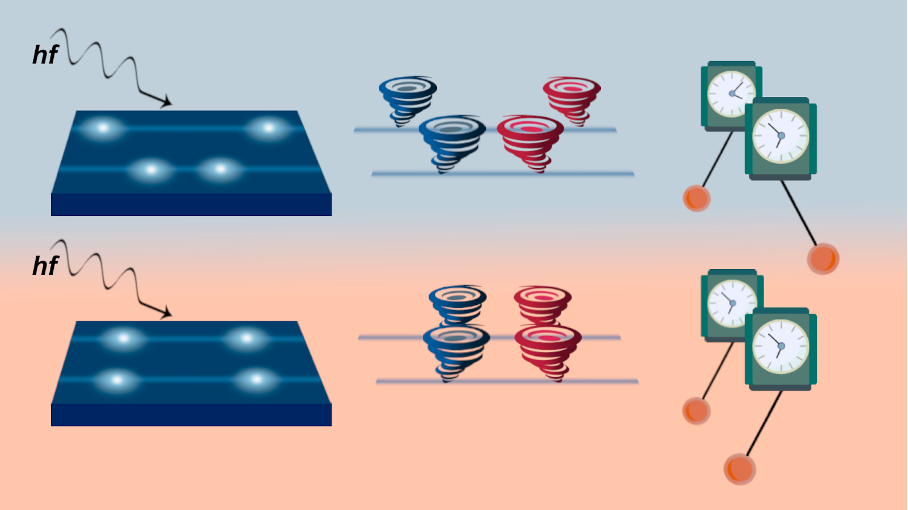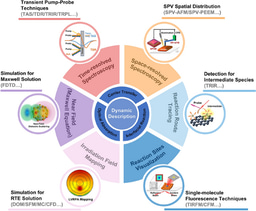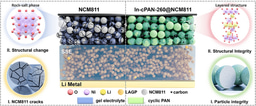Dynamic metastable vortex states in interacting vortex lines
The synchronization is a very general phenomenon for systems composed of coupled oscillators, regardless of the nature of the oscillators or the coupling.
The synchronization is also known in the field of superconductivity. The famous example is the Josephson junction which, when forced by external microwaves, exhibits peculiar characteristics, known as Shapiro steps. When the DC electric current across the junction is varied, the voltage presents a series of equidistant plateau indexed by an integer number. In the field of non-linear systems, these phenomena are known as Arnold tongues. In our paper, we numerically explore within the time-dependent Ginzburg-Landau (TDGL) framework another superconducting phenomenon: the synchronization of Abrikosov vortex motion with an external microwave drive. Not only this leads to the integer Shapiro steps, but also to the fractional ones.
The first object of our study is a superconducting nanowire crossed by a linear defect. In real materials it could be natural (grain boundaries, stacking fault lines, etc.) or artificially created object. By applying a DC current to the nanowire, we find that when the current reaches a critical threshold, two Abrikosov vortex of opposite polarities, vortex and anti-vortex, penetrate simultaneously the defect from the opposite edges, move along the line towards each other under the current-exerted Lorentz force, and finally annihilate at the nanowire center. This process then repeats. As the vortex move, they dissipate energy, resulting in a time-dependent voltage to appear. By averaging this voltage over time, we extract the DC current-voltage characteristics (CVC) that are usually measured in experiments. In our simulation, we added a microwave AC component to DC current and found the well-known integer Shapiro steps, but also the fractional ones. These fractional Shapiro steps are the sign of a strongly anharmonic vortex motion, leading to high-order Arnold tongues. We discuss the similarities and essential differences between the studied vortex-antivortex oscillator and a Josephson junction with a non-sinusoidal current-phase relationship, also exhibiting integer and fractional Shapiro steps.

As a second step, we consider two parallel linear defects separated by a distance at which the vortices of the different lines only weakly interact. As in the first case, we study the dynamic response of this two vortex-antivortex oscillator driven by a DC current and the periodic microwave at a fixed frequency. By increasing the microwave current, we reproduce at first sight the results of the first model. However, above a certain value of microwave current, we observe abrupt jumps and drops on a CVC. A detailed study of the vortex motion close to the jumps showed that the latter are due to the modification of the respective vortex penetration dynamics and motion from simultaneous to sequential. The first situation appears to have a higher voltage and is thus metastable; it is realized only with a sufficiently high microwave drive, because vortices in neighboring lines repel each other. This state is responsible for abrupt jumps on the CVC to higher Shapiro steps. Though, as the DC current component increases, the microwave drive is not sufficient anymore to stabilize the metastable state: the system switches to the sequential motion and the voltage drops. We discuss the conditions at which these drops can be observed in experiments as regions of a negative differential resistance on globally rising CVC.
Follow the Topic
-
Communications Physics

An open access journal from Nature Portfolio publishing high-quality research, reviews and commentary in all areas of the physical sciences.
Related Collections
With Collections, you can get published faster and increase your visibility.
Higher-order interaction networks 2024
Publishing Model: Open Access
Deadline: Feb 28, 2026
Physics-Informed Machine Learning
Publishing Model: Hybrid
Deadline: May 31, 2026




Please sign in or register for FREE
If you are a registered user on Research Communities by Springer Nature, please sign in